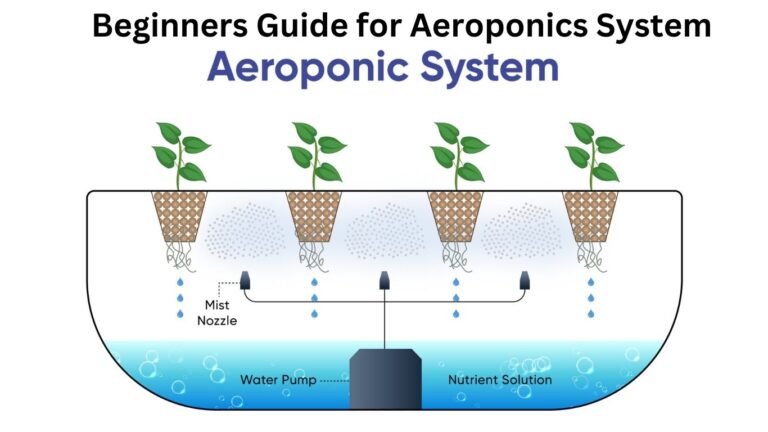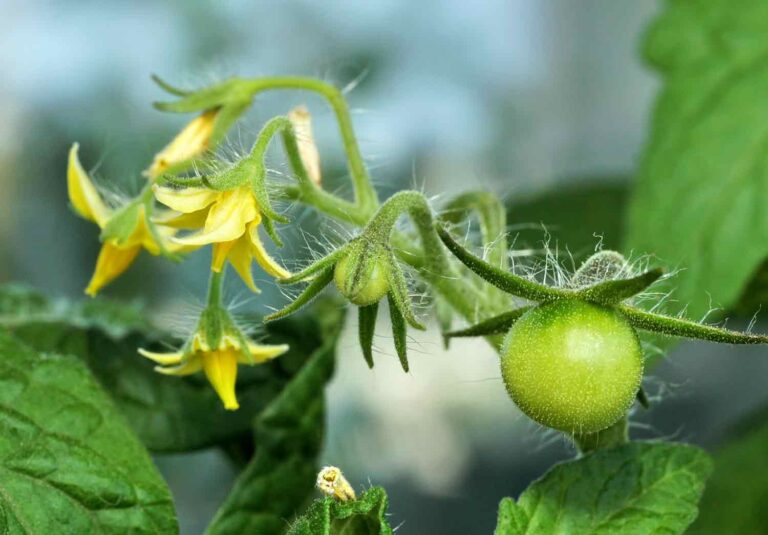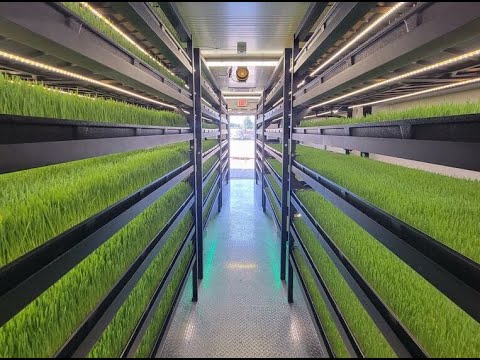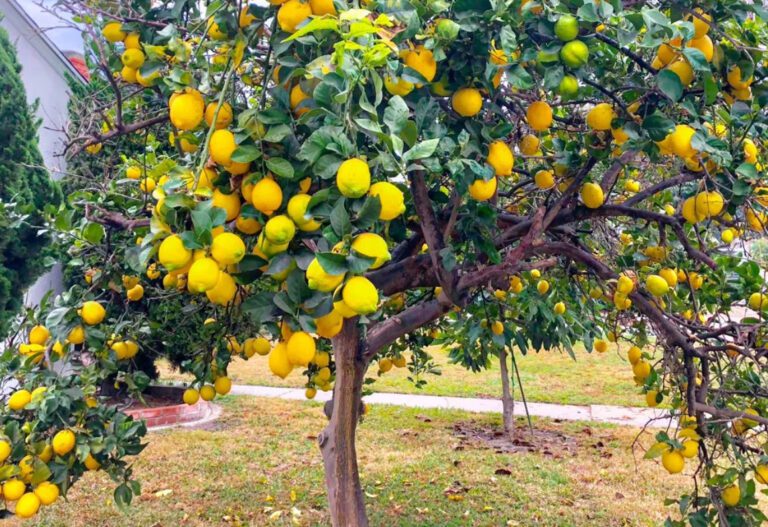Is Wildfire Smoke Bad for Plants? Everything You Need to Know About the Effects of Smoke on Your Plants
Table of Contents
Understanding the Impact of Wildfire Smoke on Plant Health
Wildfire smoke can have a significant impact on the health of plants, especially those in close proximity to the fire-affected areas. The composition of wildfire smoke, which contains a complex mixture of gases, particles, and chemicals, can directly affect the physiology and overall well-being of plants. Research has shown that exposure to smoke can lead to reduced photosynthetic activity, decreased growth rates, and increased susceptibility to diseases and pests.
One of the key ways in which smoke particles affect plant health is through their impact on plant physiology. Smoke particles can interfere with the process of photosynthesis, where plants convert sunlight into energy, by blocking or reducing the amount of light reaching the chloroplasts. This can lead to decreased production of sugars and other essential nutrients, impacting the overall growth and development of the plant. Additionally, smoke particles can also disrupt the process of respiration in plants, limiting their ability to break down stored energy and utilize it for growth. This can result in decreased plant vigor and compromised resistance to environmental stresses.
Furthermore, smoke exposure can have indirect effects on plant health by influencing water uptake and transpiration. Research has shown that smoke can affect the stomatal openings on plant leaves, which control the movement of gases in and out of the plant. Alterations in stomatal function can lead to changes in water uptake and transpiration rates, potentially causing water stress and dehydration in plants. Moreover, smoke particles can settle on leaf surfaces, hindering the exchange of gases and interfering with the absorption of sunlight, further impacting plant health.
Overall, understanding the impact of wildfire smoke on plant health is crucial for gardeners and agriculturalists alike. By recognizing the implications of smoke exposure, we can develop strategies to mitigate its negative effects and safeguard the well-being of our plants. Through further research and monitoring, we can gain a deeper understanding of the long-term consequences of repeated smoke exposure and ensure the resilience and sustainability of our plant ecosystems.

The Composition of Wildfire Smoke and Its Effects on Plants
Wildfire smoke is a complex mixture of gases and particles that can have significant effects on plant health. The composition of wildfire smoke varies depending on several factors such as the type of vegetation burned, the duration and intensity of the fire, and atmospheric conditions. However, it generally includes harmful substances such as carbon monoxide, nitrogen dioxide, sulfur dioxide, volatile organic compounds, and a wide range of fine particles.
These smoke particles can have detrimental effects on plants, especially when they are inhaled or deposited on the foliage. The particles can block the stomata, the tiny openings on the leaves that regulate gas exchange, thus hindering photosynthesis and reducing overall plant productivity. Additionally, the particles can clog the pores of the leaves, disrupting transpiration and affecting the plant’s ability to regulate water uptake and loss. Moreover, the toxic gases present in wildfire smoke can have direct negative impacts on physiological processes within the plant, impairing respiration, inhibiting nutrient uptake, and compromising overall plant health. Understanding the composition of wildfire smoke and its effects on plants is crucial for developing effective strategies to mitigate the damage caused by wildfires and protect plant health in affected areas.
How Smoke Particles Can Affect Plant Physiology
Smoke particles from wildfires can have a significant impact on the physiology of plants. When inhaled, these particles can penetrate a plant’s tissues and have direct effects on various physiological processes. One such effect is the interference with photosynthesis, the process by which plants convert sunlight into energy. Smoke particles can block or scatter sunlight, reducing the amount of light available for photosynthesis and ultimately impacting a plant’s ability to produce energy.
Additionally, smoke particles can affect a plant’s respiration, the process by which plants release carbon dioxide and take in oxygen. Studies have shown that exposure to smoke can alter the respiration rates of plants, leading to a disruption in the balance of gases within their tissues. This disruption can have cascading effects on other metabolic processes, such as nutrient uptake and water regulation, ultimately impacting the overall health and growth of the plant. Understanding these physiological changes is crucial for developing strategies to mitigate the negative effects of smoke exposure on plant health.

The Role of Smoke in Plant Growth and Development
Smoke, a byproduct of wildfires, plays a crucial role in plant growth and development. While it may seem counterintuitive, studies have shown that smoke exposure can actually stimulate certain aspects of plant growth and enhance overall plant health. One of the main ways smoke influences plant growth is by triggering an increase in seed germination rates. Research has indicated that certain compounds found in smoke, such as butenolides, can break seed dormancy and promote the emergence of seedlings. This can be especially beneficial for plant species that rely on periodic wildfires for their natural regeneration.
In addition to promoting seed germination, smoke has been found to have positive effects on root development. It has been observed that exposure to smoke can stimulate the formation of adventitious roots, which are additional roots that grow from non-root tissues. These adventitious roots can enhance nutrient uptake, water absorption, and overall plant stability. Furthermore, smoke exposure has been linked to an increase in plant biomass, chlorophyll content, and the production of plant hormones that regulate growth and development. These findings suggest that smoke, despite its potential harmful effects on air quality, serves as a vital element in the intricate tapestry of plant life.
The Relationship Between Smoke Exposure and Photosynthesis
Smoke exposure can have a significant impact on photosynthesis in plants. Photosynthesis is the process by which plants convert sunlight, carbon dioxide, and water into glucose and oxygen, providing them with the energy they need to grow and thrive. However, when exposed to smoke, plants may experience reduced photosynthetic rates, which can hinder their ability to produce energy and nutrients.
Smoke contains a range of pollutants and toxic compounds, such as carbon monoxide, volatile organic compounds (VOCs), and fine particulate matter. These substances can enter plant tissues and interfere with the various stages of photosynthesis. For instance, carbon monoxide can bind to hemoglobins in plant cells, inhibiting their ability to transport oxygen, which is essential for the process of photosynthesis. Additionally, VOCs can damage chloroplasts, the organelles responsible for photosynthesis, leading to a decline in the overall efficiency of this crucial process.
The effects of smoke exposure on photosynthesis can vary depending on the intensity and duration of the exposure, as well as the specific plant species. Some plants may be more resilient to smoke and able to recover quickly, while others may suffer long-lasting effects. Understanding the relationship between smoke exposure and photosynthesis is crucial for developing strategies to mitigate the negative impacts on plant health and productivity. By studying this relationship, scientists can provide valuable insights into how to protect plants from the harmful effects of wildfire smoke and help gardeners and farmers maintain thriving vegetation even in the face of environmental challenges.

Examining the Effects of Smoke on Plant Respiration
Smoke from wildfires can have significant effects on plant respiration, the process by which plants take in oxygen and release carbon dioxide. Studies have shown that exposure to smoke can lead to a decrease in plant respiration rates, reducing the overall efficiency of this vital metabolic process.
One possible reason for this decrease is the presence of harmful compounds in smoke, such as particulate matter and volatile organic compounds (VOCs). These compounds can hinder the proper functioning of plant stomata, which are small openings on the surface of leaves that regulate gas exchange. When smoke particles clog the stomata, plants struggle to take in the necessary oxygen and release carbon dioxide, leading to a reduction in respiration rates.
Furthermore, the presence of VOCs in smoke can interfere with the enzymes responsible for facilitating respiration in plants. These enzymes, such as cytochrome oxidase and succinate dehydrogenase, are essential for the metabolic processes involved in producing energy for plant growth and maintenance. The inhibition of these enzymes by smoke compounds can disrupt the respiration process and ultimately compromise plant health.
Overall, understanding the effects of smoke on plant respiration is crucial for mitigating the negative impact of wildfires on vegetation. By further investigating the mechanisms behind these effects, scientists can develop strategies to protect plants and enhance their resilience in the face of recurring smoke exposure. Additionally, implementing measures to reduce the release of harmful compounds during wildfires can help minimize the disruption of plant respiration and promote healthier ecosystems.
The Influence of Smoke on Plant Water Uptake and Transpiration
Smoke from wildfires can have a significant influence on plant water uptake and transpiration rates. The composition of smoke particles can lead to reduced water availability for plants, impacting their overall health and growth. One of the main ways smoke affects water uptake is by clogging stomata, the tiny openings on plant leaves responsible for gas exchange. When these stomata become blocked by smoke particles, plants struggle to regulate the amount of water they absorb from the soil.
Furthermore, smoke exposure can also lead to increased transpiration rates in plants. This is because smoke particles can accumulate on the leaf surfaces, creating a thin layer that prevents water from evaporating efficiently. As a result, plants may experience higher rates of water loss through transpiration, which can result in water stress and dehydration.
Understanding the influence of smoke on plant water uptake and transpiration is crucial for gardeners and botanists alike. By recognizing the impact that smoke particles can have on these processes, we can develop effective strategies to mitigate the negative effects and protect our plants from damage. Stay tuned as we explore further aspects of smoke’s impact on plant health and growth in this comprehensive article.
Exploring the Impact of Smoke on Nutrient Uptake and Soil Quality
Wildfire smoke not only affects the air quality, but it can also have a significant impact on nutrient uptake and soil quality for plants. When smoke particles settle on plant leaves, they can hinder their ability to absorb essential nutrients from the soil. This interference can lead to nutrient deficiencies in plants, affecting their overall health and development.
Moreover, the composition of wildfire smoke can alter the soil’s chemical properties, further impacting nutrient availability. The smoke’s acidic nature can lower soil pH, making certain nutrients less accessible to plants. Additionally, the deposition of smoke particles can result in the accumulation of heavy metals and other pollutants in the soil, which can be detrimental to plant growth.
Studies have shown that the presence of smoke can significantly reduce the uptake of important nutrients such as nitrogen, phosphorus, and potassium by plants. This reduction in nutrient absorption can weaken the plants’ immune systems, making them more susceptible to diseases and pests. Furthermore, as smoke particles settle on plant surfaces, they can hinder the penetration of sunlight, impeding photosynthesis and subsequently reducing the production of carbohydrates that are crucial for plant growth and development.
Overall, exploring the impact of smoke on nutrient uptake and soil quality is vital to understanding the long-term consequences of wildfires on plant health. By studying these effects, we can develop strategies to mitigate the negative impacts and protect our plants from smoke-related damage. It is crucial for gardeners, farmers, and researchers to work together to find ways to minimize the impact of wildfire smoke on plant nutrients and soil quality, ensuring the continued growth and productivity of our green spaces.
| Key Points | Implications/Consequences |
|---|---|
| Smoke particles hinder nutrient absorption from the soil | – Nutrient uptake is compromised on plant leaves |
| Wildfire smoke’s acidic nature lowers soil pH | – Reduced accessibility of certain nutrients due to pH alteration |
| Deposition of smoke particles accumulates heavy metals | – Soil pollution and potential harm to plant health |
| Smoke reduces uptake of essential nutrients (N, P, K) | – Weakens plants’ immune systems, making them susceptible to issues |
| Reduction in nutrient absorption makes plants susceptible | – Increased vulnerability to diseases and pests |
| Smoke particles hinder sunlight penetration and photosynthesis | – Impacts plant’s ability to produce carbohydrates through photosynthesis |
| Studying smoke effects crucial for understanding long-term consequences | – Provides insights into the impact on plant health and soil quality |
| Collaboration essential for developing strategies to mitigate impact | – Collective efforts to protect plants from smoke-related damage |
This table provides a concise overview of the consequences of wildfire smoke on plant health, nutrient absorption, and soil quality, emphasizing the importance of research, understanding long-term effects, and collaborative efforts for mitigation strategies.
Assessing Smoke’s Role in Plant Disease and Pest Resistance
Assessing the role of smoke in plant disease and pest resistance is crucial for understanding the holistic effects of wildfire smoke on plant health. Smoke contains various compounds and particulates that have the potential to impact plant physiology and interact with plant pathogens and pests.
Research has shown that certain components of smoke, such as volatile organic compounds (VOCs) and polycyclic aromatic hydrocarbons (PAHs), possess antimicrobial properties that can suppress the growth of plant pathogens. These compounds may inhibit the germination of fungal spores or inhibit the growth of bacteria, reducing the risk of disease development in plants.
Additionally, smoke has been found to affect the behavior and abundance of insect pests. Some studies suggest that certain smoke compounds can act as repellents, deterring insects from feeding or laying eggs on plants. Other studies indicate that smoke can disrupt the communication and reproductive processes of pest insects, thereby reducing population levels.
While these findings highlight the potential positive effects of smoke on plant disease and pest resistance, it is important to note that smoke composition and its effects can vary depending on various factors, including the type of vegetation burned and the duration of exposure. Future research is needed to explore these relationships further and determine the specific mechanisms by which smoke impacts plant-pathogen and pest interactions.
Understanding the impacts of smoke on plant disease and pest resistance can aid in the development of proactive strategies to mitigate wildfire smoke’s negative effects on plant health. By incorporating smoke-based treatments or practices into plant disease and pest management strategies, gardeners and agricultural professionals can potentially enhance the resilience of plants against diseases and pests, thereby safeguarding crop yields and ecosystem health.
Understanding the Long-Term Effects of Repeated Smoke Exposure on Plants
Repeated exposure to wildfire smoke can have significant long-term effects on plants. The accumulation of smoke particles in the surrounding environment can lead to a range of physiological and developmental changes that can impact plant health and productivity.
One of the key long-term effects of smoke exposure on plants is the impairment of photosynthesis. Smoke particles can block and reduce light penetration, limiting the plant’s ability to convert sunlight into energy. This disruption can result in reduced growth, decreased yield, and overall diminished plant health. Additionally, smoke can also impact plant respiration, affecting the plant’s ability to utilize stored energy for essential metabolic processes. This can further hamper plant growth and development, making them more susceptible to stress and disease.
Understanding the long-term effects of repeated smoke exposure on plants is crucial for farmers, gardeners, and plant scientists. By uncovering the specific mechanisms and impacts of smoke on plant physiology, we can develop strategies to mitigate the negative effects and protect plant health. Ongoing research in this field aims to provide insights into the long-term consequences of smoke exposure, allowing for the implementation of innovative agricultural practices and the development of resilient plant cultivars.
Strategies for Protecting Plants from Wildfire Smoke Damage
Wildfires can have devastating effects on plant health, especially when it comes to the smoke they produce. As a gardener or plant enthusiast, it is important to be proactive in protecting your plants from the damaging effects of wildfire smoke. Here are a few strategies that can help mitigate the damage and promote healthier plant growth.
1. Create a Barrier: One effective strategy is to create a physical barrier between your plants and the smoke. This can be done by erecting temporary structures such as shade cloths or installing smoke filters on air intake systems in greenhouses. These barriers can help block the harmful particles present in smoke, reducing their impact on plant health.
2. Maintain Proper Ventilation: Adequate ventilation is crucial to prevent the buildup of smoke particles around your plants. Ensuring proper airflow can help disperse the smoke and minimize its concentration in the immediate vicinity. Opening windows, using fans, or installing ventilation systems can aid in maintaining a healthy environment for your plants.
Remember, each plant species may react differently to smoke exposure, and certain plants may be more tolerant or susceptible than others. By implementing these strategies, you can protect your plants and support their growth, even in the face of wildfire smoke. Stay tuned for more tips on how to mitigate the negative effects of smoke on plant health.
Mitigating the Negative Effects of Smoke on Plant Health
One of the key factors in mitigating the negative effects of smoke on plant health is to create a barrier between the plants and the smoke. This can be achieved by using physical covers such as shade cloths or screens to protect the plants from direct exposure to smoke particles. Additionally, creating a controlled environment indoors, such as a greenhouse or a hydroponic system, can help minimize the impact of smoke on plant health.
Another important aspect to consider is the maintenance of good air quality within the growing environment. Installing air filtration systems can help to reduce the amount of smoke particles that reach the plants. These systems can be equipped with high-efficiency particulate air (HEPA) filters that are designed to capture tiny particles, including those found in smoke. Regularly cleaning and replacing the filters is essential to ensure their effectiveness in removing smoke particles from the air.
Furthermore, it is crucial to closely monitor the plants for any signs of stress or damage caused by smoke exposure. This can include wilting, leaf discoloration, reduced growth, or changes in overall plant health. By promptly identifying these signs, appropriate actions can be taken to address the specific needs of the plants, such as adjusting watering schedules, providing additional nutrients, or implementing protective measures.
Efforts should also be made to maintain overall plant health and resilience through proper nutrition and disease management. Providing plants with a balanced diet that includes essential nutrients can boost their immune systems and help them withstand the negative effects of smoke exposure. Regularly monitoring soil quality and pH levels, as well as promptly addressing any nutrient deficiencies or imbalances, can contribute to the overall health and vitality of the plants.
In conclusion, mitigating the negative effects of smoke on plant health requires a multi-faceted approach. Taking proactive measures to create a physical barrier, maintaining good air quality, closely monitoring plant health, and ensuring proper nutrition and disease management are all crucial steps in minimizing the impact of smoke on plant growth and development. By implementing these strategies, gardeners can help safeguard the well-being of their plants and create a thriving growing environment.

The Importance of Monitoring and Assessing Wildfire Smoke Effects on Plants
Monitoring and assessing the effects of wildfire smoke on plants is of paramount importance in understanding the long-term consequences and developing strategies for protection and mitigation. Wildfires are becoming increasingly frequent and intense, resulting in extensive smoke exposure for plants in affected areas. By closely monitoring these effects, researchers can gather valuable data that will help us comprehend the full impact on plant health and devise effective measures to safeguard our plant ecosystems.
Through rigorous monitoring, researchers can track various aspects of plant physiology and growth in response to smoke exposure. This includes assessing the effects on photosynthesis, respiration, water uptake, nutrient absorption, and disease resistance, among other factors. Understanding these impacts allows us to better comprehend the mechanisms by which smoke influences plant health and identify vulnerable plant species or regions that may require specific attention and protection.
Moreover, monitoring and assessing smoke effects can also provide insights into the broader ecological repercussions of wildfires. For instance, by studying changes in soil quality and composition resulting from smoke exposure, we can gain a deeper understanding of the overall impact on the ecosystem and the potential for long-term recovery. By utilizing a range of monitoring techniques, such as air quality sensors, satellite imagery, and field observations, we can gather comprehensive data that informs both short-term mitigation strategies and long-term environmental management initiatives. Overall, the importance of monitoring and assessing wildfire smoke effects on plants cannot be overstated as it forms the foundation for effective preservation and restoration efforts.
How does wildfire smoke affect plant health?
Wildfire smoke can have various effects on plant health, including changes in physiology, growth, photosynthesis, respiration, water uptake, nutrient uptake, and disease/pest resistance.
What is the composition of wildfire smoke and how does it impact plants?
Wildfire smoke consists of particles, gases, and volatile organic compounds. These components can enter plants through stomata and affect their physiology and overall health.
How do smoke particles affect plant physiology?
Smoke particles can interfere with plant physiology by clogging stomata, reducing photosynthesis rates, affecting respiration, and impacting water and nutrient uptake.
Does smoke exposure influence plant growth and development?
Yes, smoke exposure can influence plant growth and development. It can affect plant hormones, growth regulators, and the expression of genes related to growth and development.
How does smoke exposure affect photosynthesis in plants?
Smoke exposure can reduce photosynthesis rates in plants due to the blockage of stomata and the absorption of light by smoke particles.
What are the effects of smoke on plant respiration?
Smoke can affect plant respiration by altering the balance between the production and consumption of energy, potentially leading to reduced respiration rates.
Does smoke impact plant water uptake and transpiration?
Yes, smoke can affect plant water uptake and transpiration by clogging stomata and limiting the plant’s ability to release water vapor through transpiration.
Can smoke impact nutrient uptake and soil quality for plants?
Smoke can have an impact on nutrient uptake in plants by altering the availability of nutrients in the soil. It can also affect soil quality by depositing ash and altering soil pH.
What is the relationship between smoke exposure and plant disease/pest resistance?
Smoke exposure can affect plant disease/pest resistance by influencing the plant’s defense mechanisms, such as altering the production of defensive compounds or weakening the plant’s immune response.
Are there any long-term effects of repeated smoke exposure on plants?
Yes, repeated smoke exposure can have long-term effects on plants, including cumulative damage to their physiology, growth, and overall health.
How can plants be protected from wildfire smoke damage?
Strategies for protecting plants from wildfire smoke damage include creating physical barriers, implementing proper irrigation, providing adequate nutrients, and choosing smoke-tolerant plant species.
What can be done to mitigate the negative effects of smoke on plant health?
Mitigating the negative effects of smoke on plant health can be achieved through monitoring air quality, implementing proper ventilation systems, and promptly addressing any smoke-related issues.
Why is it important to monitor and assess wildfire smoke effects on plants?
It is crucial to monitor and assess wildfire smoke effects on plants to understand the extent of damage, identify vulnerable plant species, develop mitigation strategies, and ensure the long-term health and sustainability of plant ecosystems.

Beck Wakeford is a dedicated writer at SouthElMonteHydroponics, with a fervent enthusiasm for agriculture and technological innovation. Armed with a degree in Agricultural Engineering from a leading university, Beck specializes in hydroponic systems design, automation, and optimization. Their passion for merging traditional farming with cutting-edge technology drives them to explore novel solutions for sustainable food production. Beck’s expertise and keen interest in the intersection of engineering and agriculture make them a valuable asset in the quest for efficient and eco-friendly farming practices. Through their writing, Beck aims to inspire others to embrace the potential of hydroponics in shaping a more sustainable future.






